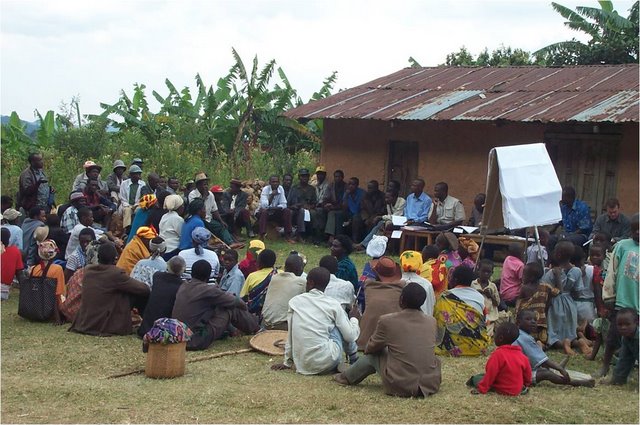|

Conservation of natural resources has become a social rather than a
biological challenge due to population increase, disparity of wealth and
unauthorised resource harvesting. Conservation and development interests
have appeared incompatible if not in direct conflict. Involving local
people in the management of natural resources within protected areas, as
well as the realization of sustainable benefits for local people, may
partly address the problem. Tourism for example has been presented as a
mechanism to justify conservation without harming the resource base.
Well managed tourism may maintain the forests’ environmental services.
The Bwindi Impenetrable forest is one of the few remaining high
elevation forests in Uganda and has been gazetted as a national park due
to the presence of unique wildlife such as Mountain gorillas (Gorilla
beringei beringei).
A study
about people’s attitudes towards the newly gazetted park was requested
by the management authority. The study aimed at; 1) determining
attitudes of local people around the national park towards conservation,
development and tourism, 2) identifying potential ways in which tourism
generated revenue can be channelled to benefit local communities and 3)
exploring how socio-demographic characteristics and resource use affect
conservation attitudes. A questionnaire survey was administered between
November 18 and December 24, 1992 among communities within a 10
kilometre radius of Bwindi Impenetrable National Park (BINP). 3 parishes
were selected for the study, based on different land-use pattern, forest
cover, road accessibility and population density. Each of these parishes
was divided into two sub-units, based on enumeration areas of the 1990
population census; one bordering the park and another one further away
from it. Within the sub-units, households were picked randomly from the
enumeration list. In total, 76 households were interviewed.
 Results
indicated that the number of respondents who valued conservation
increased with higher education, non-farmer occupations and increased
distance from the forest. Most households surrounding BINP were not
sharing many of the ‘typical western’ conservation attitudes that value
preservation of forests and wildlife for reasons other than self benefit
(e.g. scientific, aesthetic or moral). Generally, respondents with
positive attitudes towards the park recognised utilitarian benefits from
the protected area including tourism revenue, employment and water
catchment. Results
indicated that the number of respondents who valued conservation
increased with higher education, non-farmer occupations and increased
distance from the forest. Most households surrounding BINP were not
sharing many of the ‘typical western’ conservation attitudes that value
preservation of forests and wildlife for reasons other than self benefit
(e.g. scientific, aesthetic or moral). Generally, respondents with
positive attitudes towards the park recognised utilitarian benefits from
the protected area including tourism revenue, employment and water
catchment.
The
author recommends regular monitoring of local people’s attitudes and
implementation of plans to distribute revenue from tourism to local
communities in the form of benefits. Allowing sustainable harvesting of
non timber forest resources is also expected to have a positive
influence on attitudes towards the protected area. |



 Results
indicated that the number of respondents who valued conservation
increased with higher education, non-farmer occupations and increased
distance from the forest. Most households surrounding BINP were not
sharing many of the ‘typical western’ conservation attitudes that value
preservation of forests and wildlife for reasons other than self benefit
(e.g. scientific, aesthetic or moral). Generally, respondents with
positive attitudes towards the park recognised utilitarian benefits from
the protected area including tourism revenue, employment and water
catchment.
Results
indicated that the number of respondents who valued conservation
increased with higher education, non-farmer occupations and increased
distance from the forest. Most households surrounding BINP were not
sharing many of the ‘typical western’ conservation attitudes that value
preservation of forests and wildlife for reasons other than self benefit
(e.g. scientific, aesthetic or moral). Generally, respondents with
positive attitudes towards the park recognised utilitarian benefits from
the protected area including tourism revenue, employment and water
catchment.